The Case for the Courthouse
A proposal to save and reinvent the architectural punching bag of downtown Huntsville.
We have more than enough controversy in this chaotic era, it’s true. Still, I have what may be a polarizing proposal, and it needs to be made now, before it’s too late. Here it is, so take it or leave it as you like: I think the Madison County Courthouse should remain in the Square downtown and be reinvented to serve the people in new ways for generations to come.
Hear me out.
Like many Huntsvillians, I’ve long abused the courthouse for its ungainly size, its dark cladding, and its visual incongruity with the surrounding area. As a youth, I thought of it as “the brown blob” and knew not to answer the pay phone on the Square, as it could very well be a prisoner calling from the County Jail on the top two floors of the building, where inmates would sometimes wave from the narrow windows, opened for relief from the heat.

I certainly didn’t think of the courthouse as “historic,” not like the Bibb House or the First National Bank building, with their gleaming columns. It opened around the time I was born, so what on earth could be historic about that?? Alas, having reached a certain age, and having seen giants and institutions of every ilk crumble and fall, I’m starting to appreciate that history is much closer than we think, and that it can be easy to miss, and to lose.
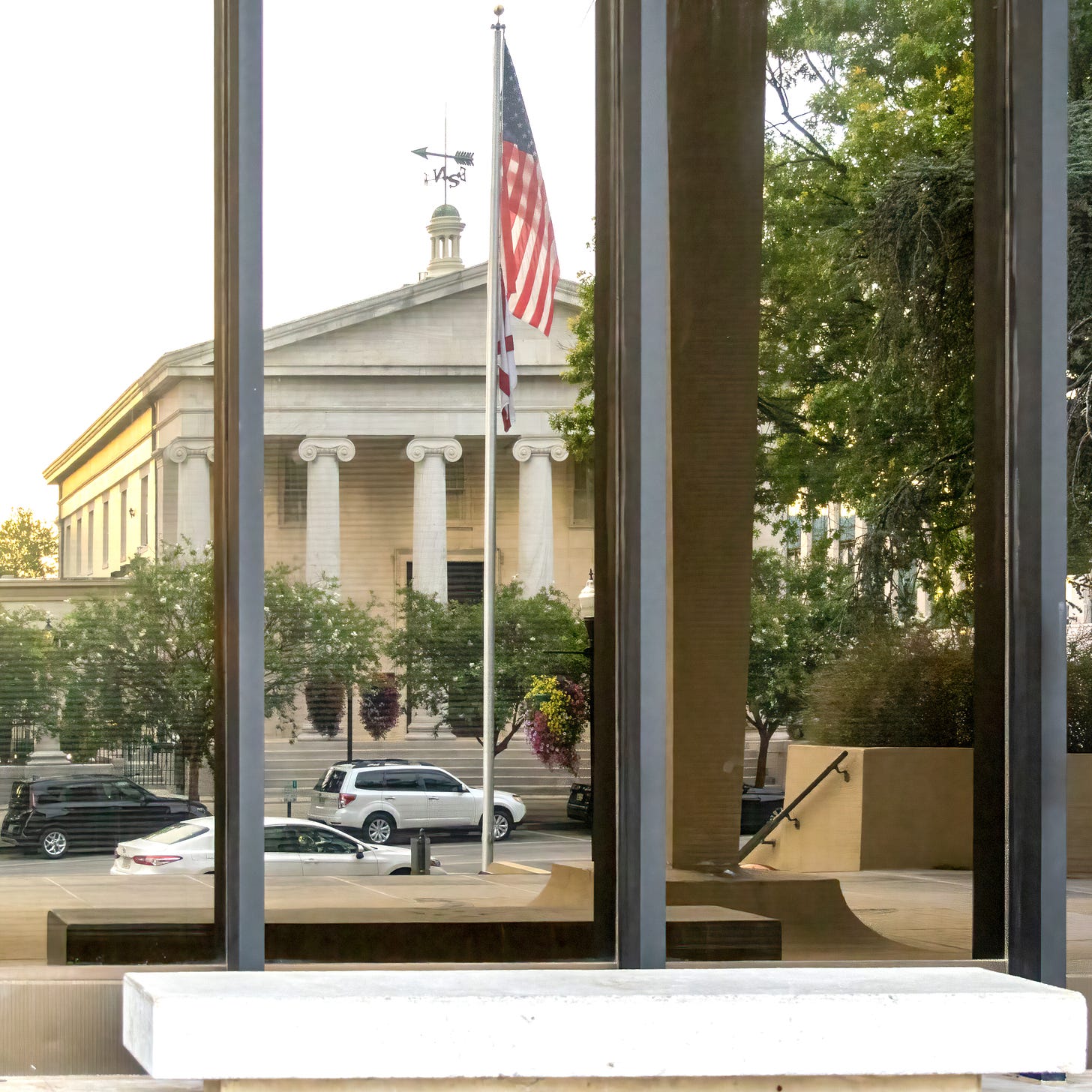
The courthouse and I both debuted in the mid-1960s, amid the energy and exhilaration of the space program. My parents even met at Marshall Space Flight Center, where they worked during their college years. And the courthouse was planned and designed to reflect our area’s role in the amazing Space Age.
The March 5, 1967 issue of The Huntsville Times was dubbed “the Courthouse Dedication Issue,” and a large section was devoted to the hotly anticipated opening of the courthouse, with ads from all kinds of local businesses wanting to join in on the excitement. The city’s residents thronged to see it when it first opened.
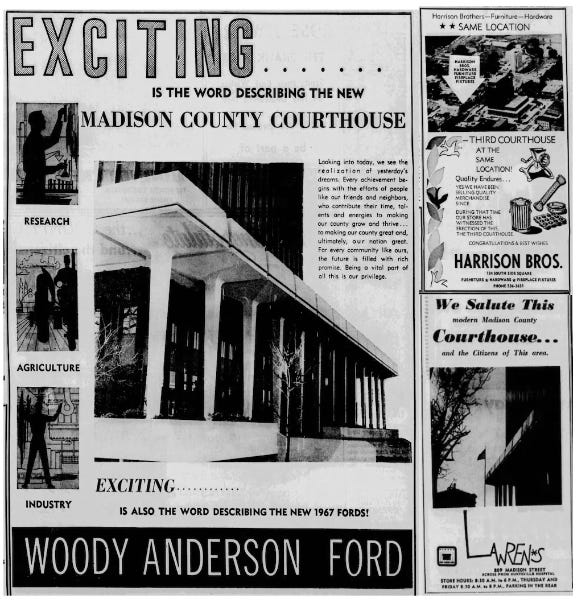
It was a long road from the start of construction in 1965 to opening day in 1967, a fascinating process that the city followed with enthusiasm. But that’s a story for another post. What’s at stake right now is the future.
To reiterate, I was not a fan of the courthouse for a long time. My youthful dislike of it persisted into adulthood and into middle age, although I always admired the amazing mural and graceful staircases in the lobby.
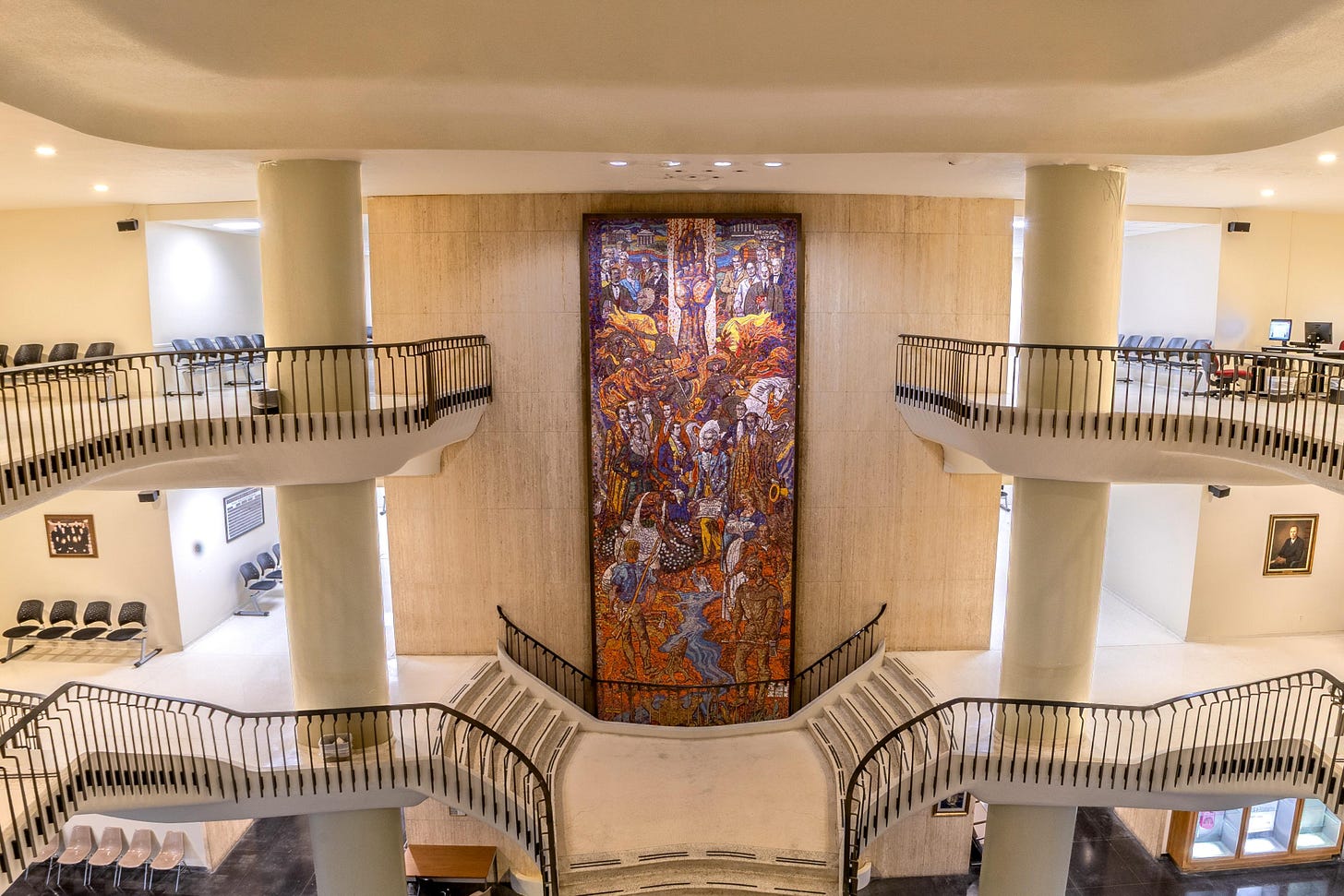
What started to shift my opinion was seeing it — and more importantly, photographing it — with the columns lit up in colors during Huntsville’s summer 2022 celebration of being named Best City to Live in the United States by U.S. News and World Report.

I was a little astonished looking at it in person, and even more so while dwelling on the photos afterward. “Crikey!” I said to myself. “That thing is cool! And not just kind of cool — it’s seriously cool!”
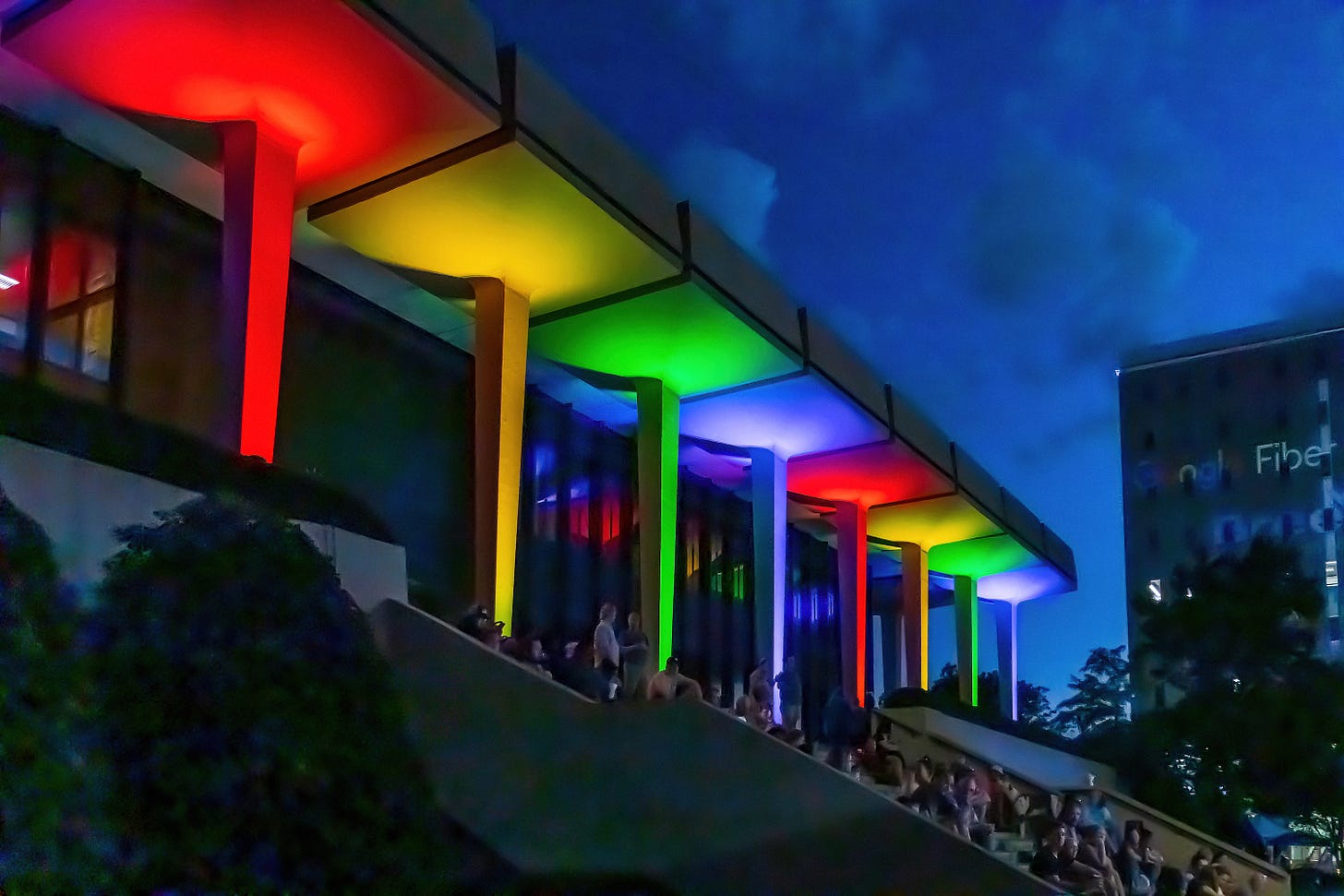
In the last year or two, rumblings from the powers that be have suggested that demolition of the courthouse is a done deal, and that what remains is only to figure out the best option for replacing it. But my feelings were mixed as proposals emerged for a possible new building or a park. Neither really sat well in my mind. I even tried to come up with some options and ideas myself. Since it sounded like demolition was happening no matter what, I just wondered how we could make the best of it.
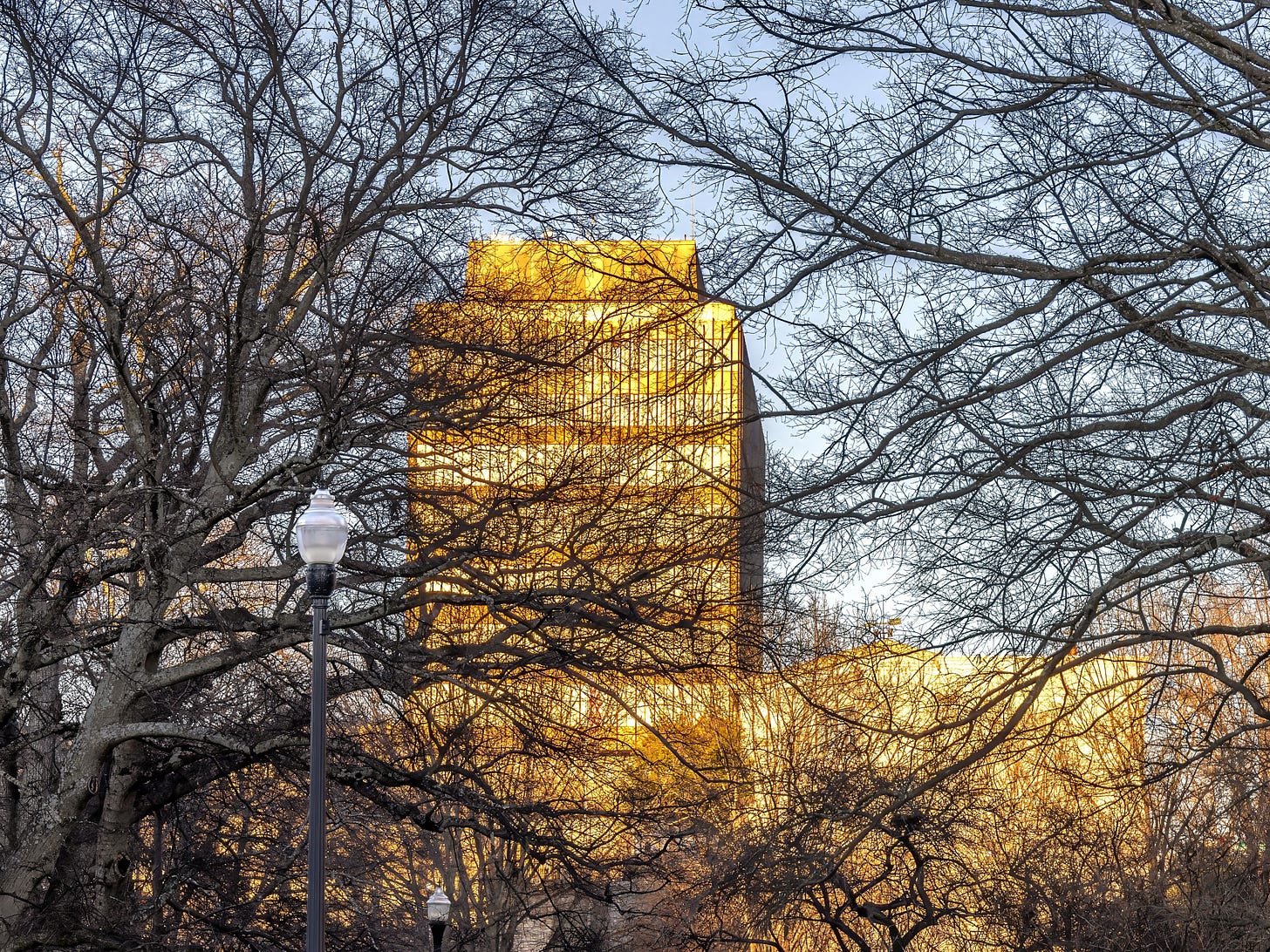
But the more I thought about it, and the more I looked at those photos of the lit-up columns, the more it seemed like it would be an awful waste to take down such an iconic structure. After all, we need more, rather than fewer, places in the city center for people to work, live, and play. Why take down a building with room for all of that, one that reflects such an important moment in the city’s history? Why not keep it, and make it an awesome gathering place in the middle of the city?
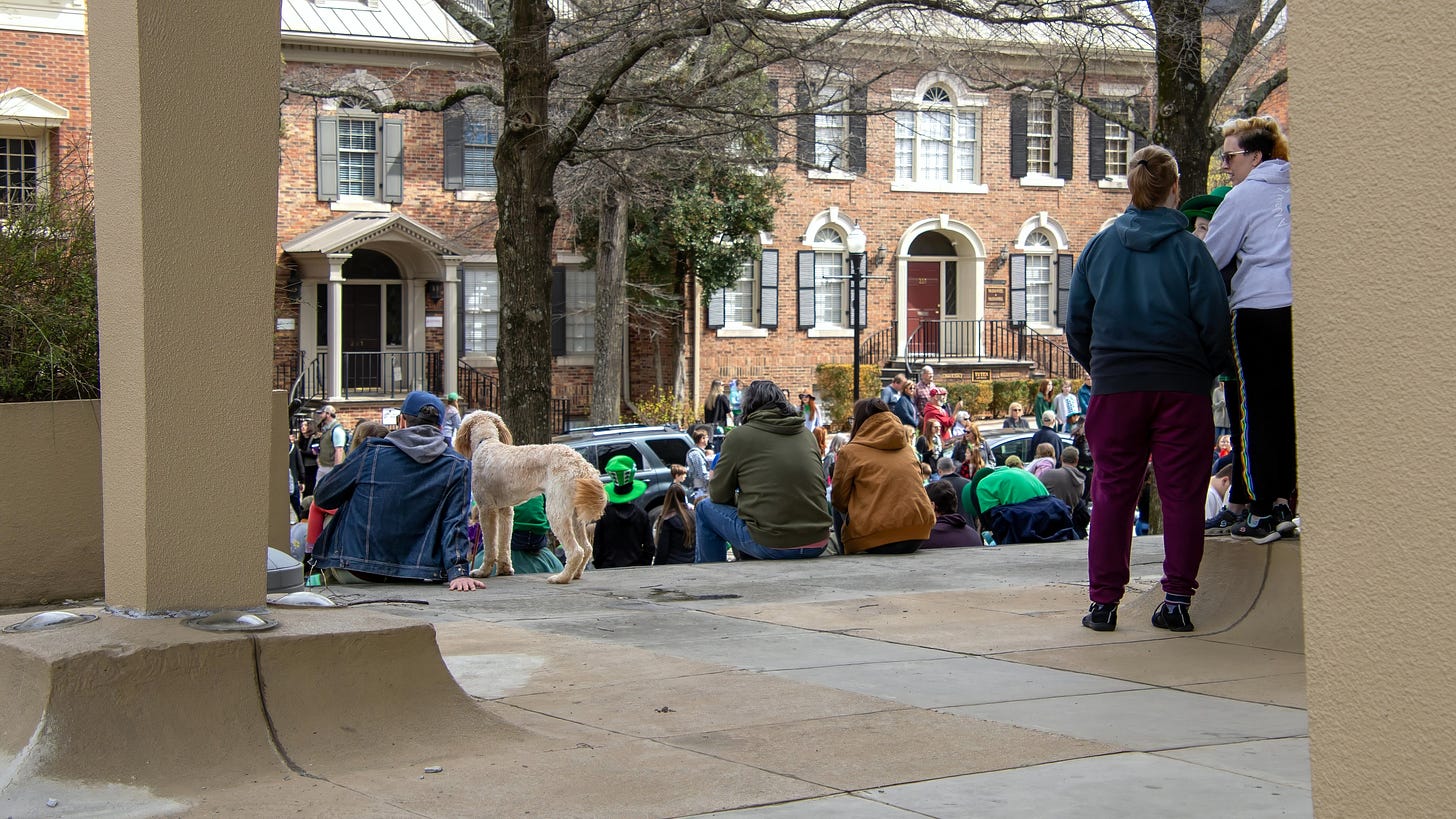
So I took my camera and went looking for the beauty I’d started to see in those lighted columns, hoping to see the possibilities, and to help others see them as well. And, despite the scruffiness and lack of updates and spiffing up in recent years, there was a lot of beauty to find, especially at sunset, when the building turns golden and majestic. From my favorite vantage point atop the Holmes Street parking deck, I saw it as it should be.
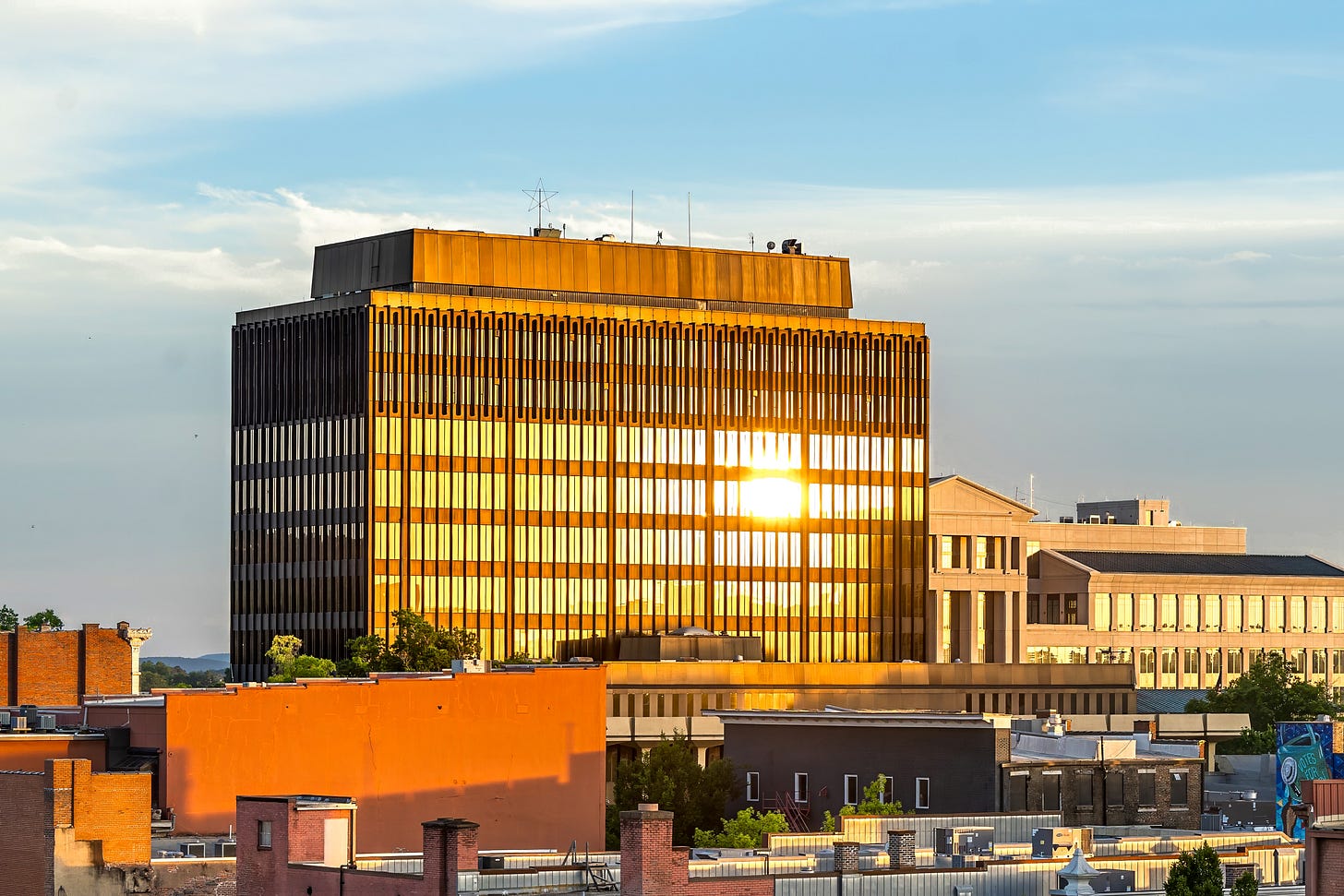
That evening, the courthouse mirrored the sky in a long, slow sunset show that drew to a close just before the lights of City Hall started to glow for the evening. It’s really hard to see this reflective beauty from the street below, and that’s something I’d like to see changed in a potential renovation.
It will take a lot of resources to refurbish the building and make it more beautiful than it’s ever been - with lighter glass and cladding, the grime and yellowing lifted. And I’m sure there is a long list of reasons for not doing it. But isn’t there a long list of reasons to avoid doing anything hard that’s worth doing – even going to the moon?
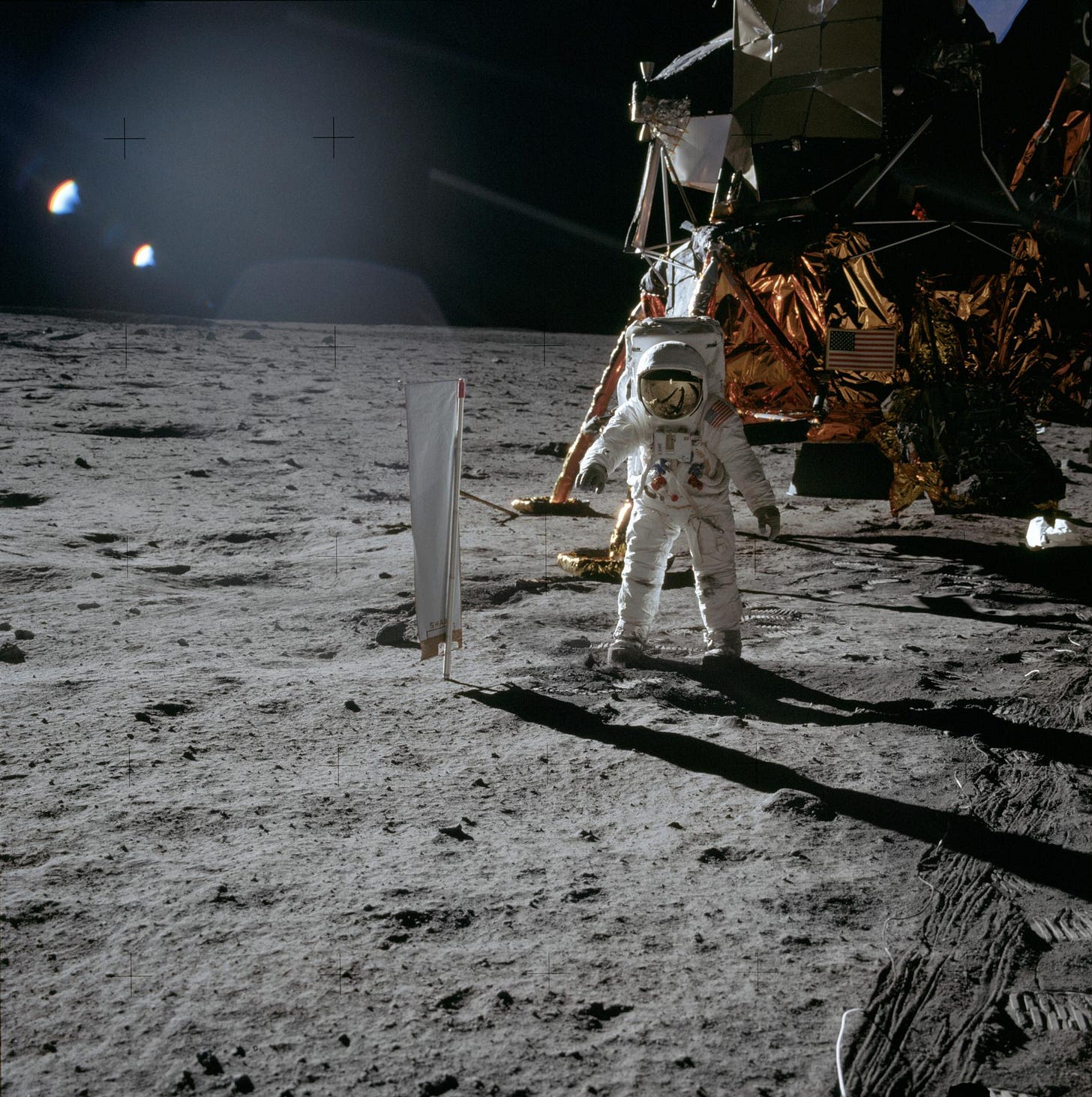
Why is the courthouse worth saving, you might ask. For one thing, just think of the potential. Look at the wraparound porch – isn’t it just made for patio dining? For fun, I used Google Gemini to add a cafe scene to one of my photos to show what it might look like.
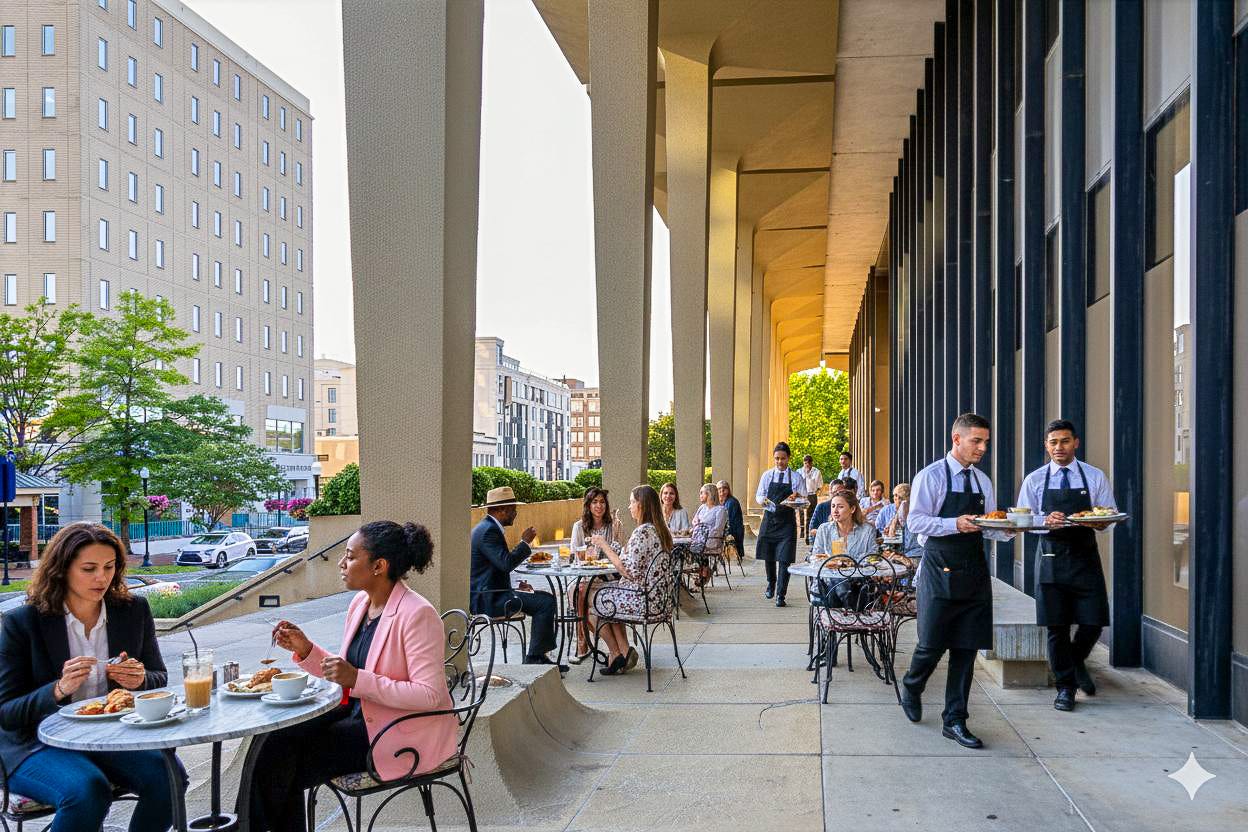
And what about this concept image, showing the porch serving as space for pop-up arts and crafts booths?

And it seems like something near a crime to destroy these elegant staircases and this beautiful mural when they could inspire and uplift upcoming generations of people in the community.
Think how wonderful it would be for the public to enjoy the space for fun events, wonderful meals, and musical performances. To enjoy and acquire art, and learn about all kinds of subjects at educational exhibitions. It could be a place for community meetings, chess matches, and storytime for kids. It wouldn’t just be a place to go through metal detectors for car tags, licenses, or jury duty. It could be a place of life and enrichment, where people want to go with their friends and loved ones. Another reimagining:
The lobby could become a much more inviting public space than it’s ever been, with shops, galleries, pop-up museum displays, and restaurants. With the demand for real estate in the city center, and the need for retail, services, and food for the increasing numbers of people who live and play there, it could be a terrific downtown hub.
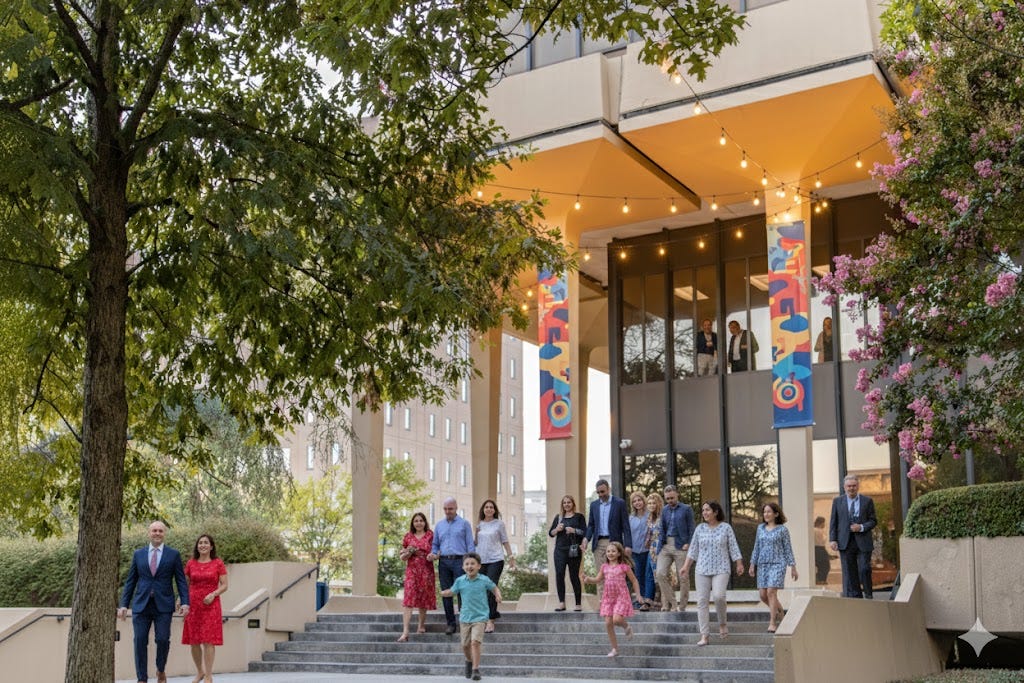
The floors above the lobby could serve as offices and meeting rooms. Perhaps some space could be retrofitted for residential space, although that can be a tricky thing to do in a space designed and built for use as offices. But it’s worth looking into, at least. Another rough concept image, of residential space inside the courthouse, again from Google Gemini:
The top two floors of the building, the former jail, have been said to be the hardest of the floors to deal with and retrofit for other uses, but perhaps this could be simplified by making those floors an open-air blow-through space for events. Remove the non-essential innards, retain maybe just enough enclosed space for a catering kitchen or prep space. Connect the floors with a staircase so both levels could be used for the same event. I’d love to see the fabulous Hunstville Symphony Orchestra try out the space for a concert, and serenade the whole Square. The closest thing Google Gemini could spit out for a concept image is this, which shows a room with windows, not a blow-through. But it imparts a very rough idea at least.

Aside from the beauty and potential of the courthouse, there are plenty of reasons to save and reinvent it. Most importantly, it is tied to our modern history and identity in a way that is hard to overstate. Its creation during the space boom was an audacious endeavor, born out of the community’s can-do optimism, pragmatic grit, and willingness to make leaps beyond the vision of so many other places. It is a physical expression of that vanguard spirit, created at a pivotal moment in our local and national history, when we truly stepped up to the plate. No other building in the county has the same kind of symbolic heft.

Second, it is a useful building, already constructed at great expense and inconvenience over the course of three years, in an area where space is badly needed, With renovation, it can continue to serve the community in new ways. Judging from the demolition and site-cleaning of the old City Hall earlier this year, it seems likely that a larger demolition project in the middle of the Square will present a dirty, months-long nightmare for all the businesses, organizations, and people in the vicinity. That’s something we would do well to avoid if at all possible.
Third, post-demolition alternatives for the site will have their own downsides. Putting another building on the site will be tremendously expensive, inflicting years of construction inconvenience on the city center. And most likely, we’d end up with yet another place with metal detectors and x-rays at the sole accessible door. If, on the other hand, the site is converted into a park, we lose the benefit of that much-needed building space, which is already sitting right there. Even worse, with a flat place in the middle of the Square, we would lose the center of gravity we’ve had in that spot for over two centuries, during which an important public building has always occupied that spot. I can’t imagine it feeling anything other than empty and wrong, like the guts had been yanked out of the Square.
Fourth, the style of the building is starting to be appreciated by more and more people. And that will continue. While you might be dubious about the look of it, your grandkids and their kids are much more likely to love it.

One of the leading lights of Huntsville’s early historic preservation efforts was the late, great Harvie Jones, an architect who helped document and save many of the beautiful historic buildings in our community. My mom worked with him on many preservation projects, and recalls that he used to say it takes about fifty years for the general public to begin to appreciate a new architectural style.1 That shift has already started, with more people recognizing the aesthetic merits of the courthouse. What some might now see ridding ourselves of an ugly building may look like incomprehensible waste and destruction to future generations. We need to take a beat and consider that we may be in danger of losing something truly valuable.
One caveat: I believe that a public entity – preferably either the county or the city – should absolutely continue to hold ownership of this property. It would be unwise and irresponsible for the people to walk away from this kind of equity, in a piece of real estate that will not only continue to climb in value, but that is also in such a central place that has long been held by the public.
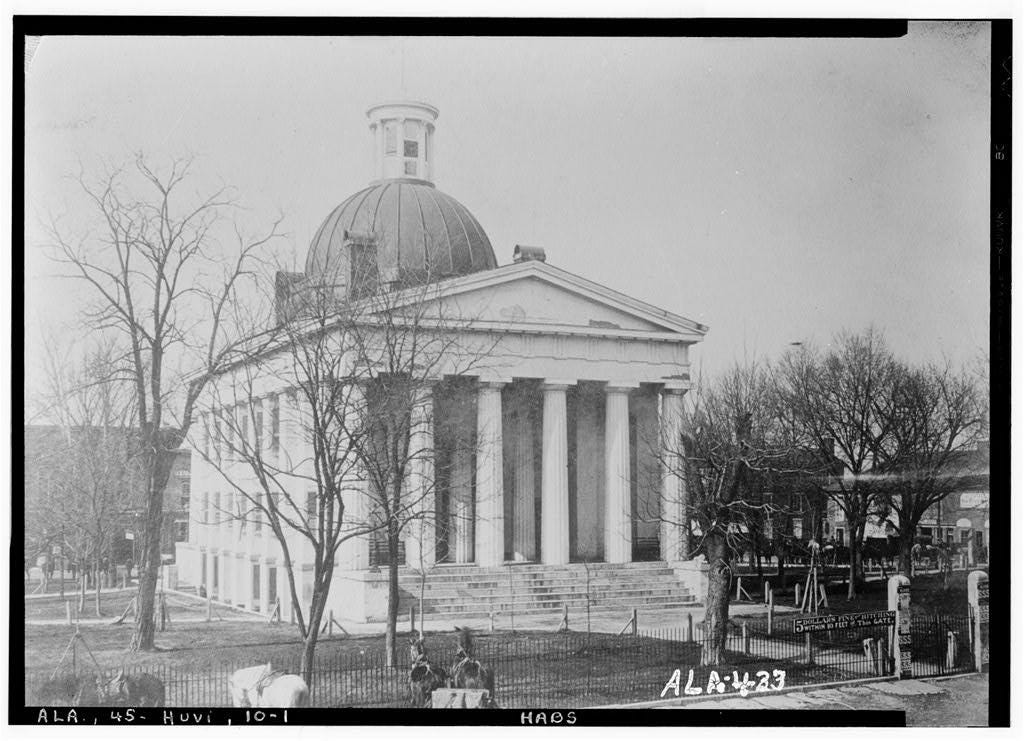
The public should continue to have control of the space, rather than private owners whose priorities may not align with the public interest. Maybe some strategic partnerships could enable the community to retain title to the property and do what is needed to repurpose the space in a sustainable way.
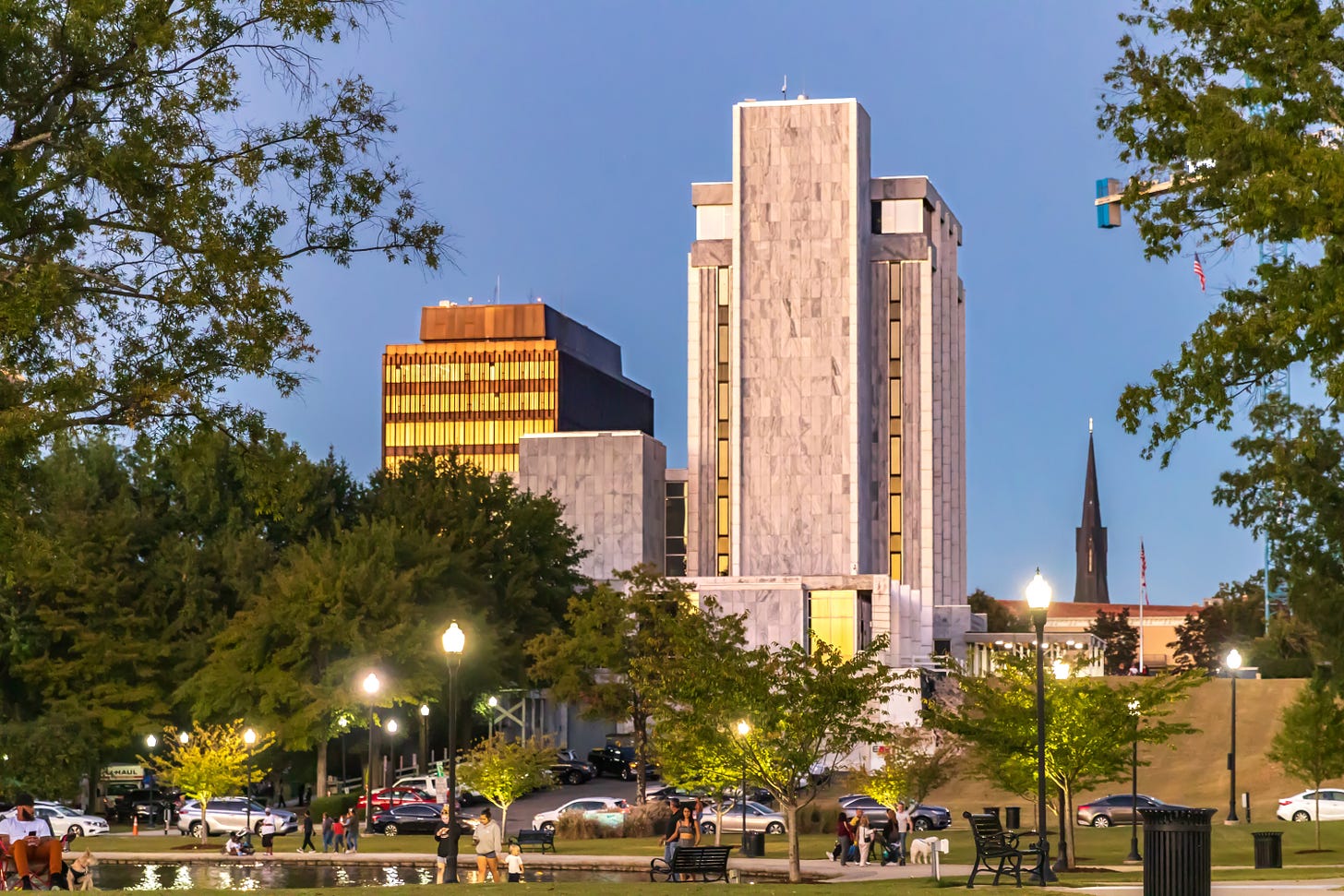
A courthouse overhaul like this would be hard, I realize – both in ways I can imagine, and in some I haven’t even begun to consider. But we’re smart and we’re capable, and we’ve made big dreams happen before. Let’s figure this thing out.
See “The Heart of Madison County – The Madison County Courthouse,” by Nancy Wilkinson Van Valkenburgh in the May/June 2022 issue of Event Huntsville magazine, page 70.


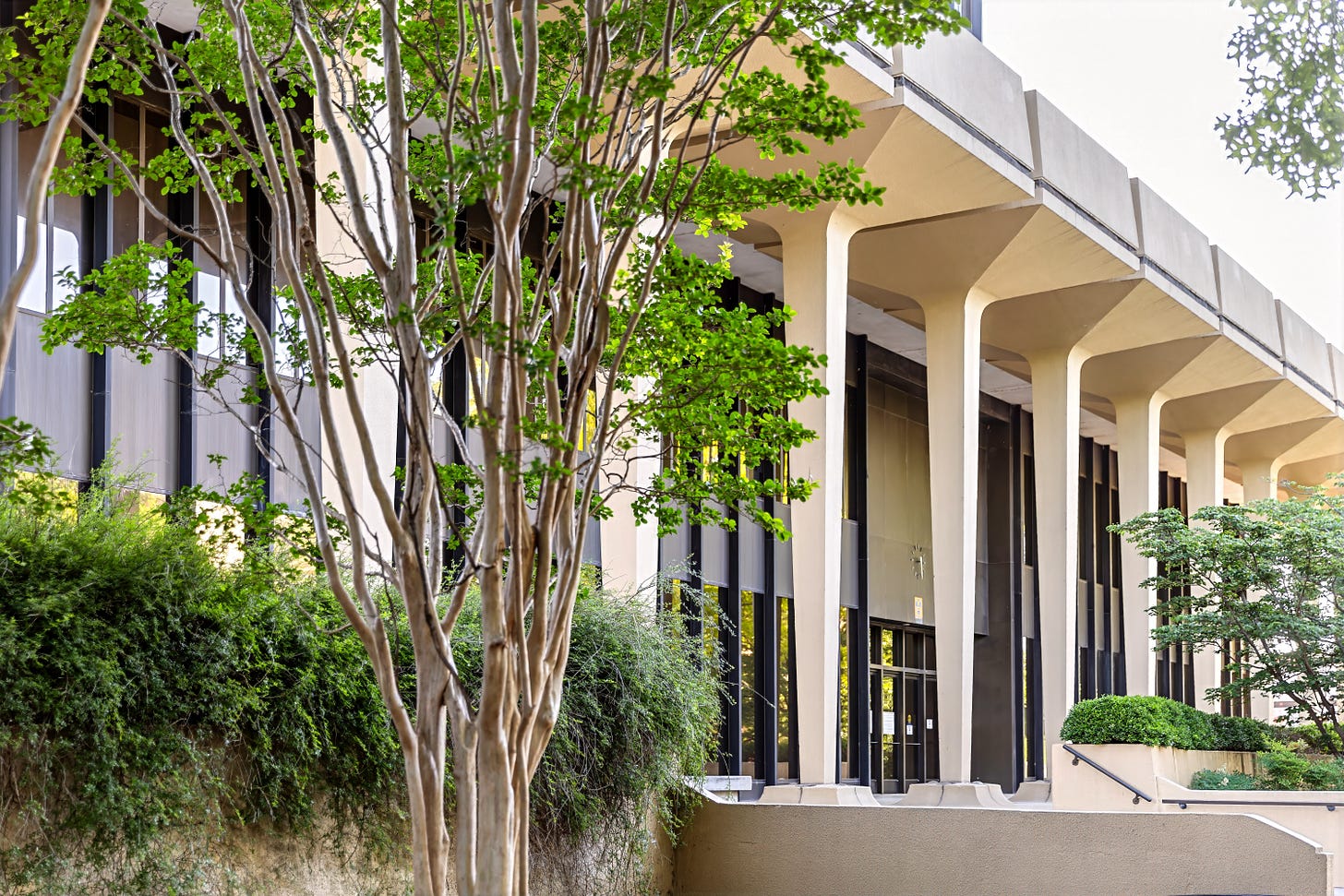


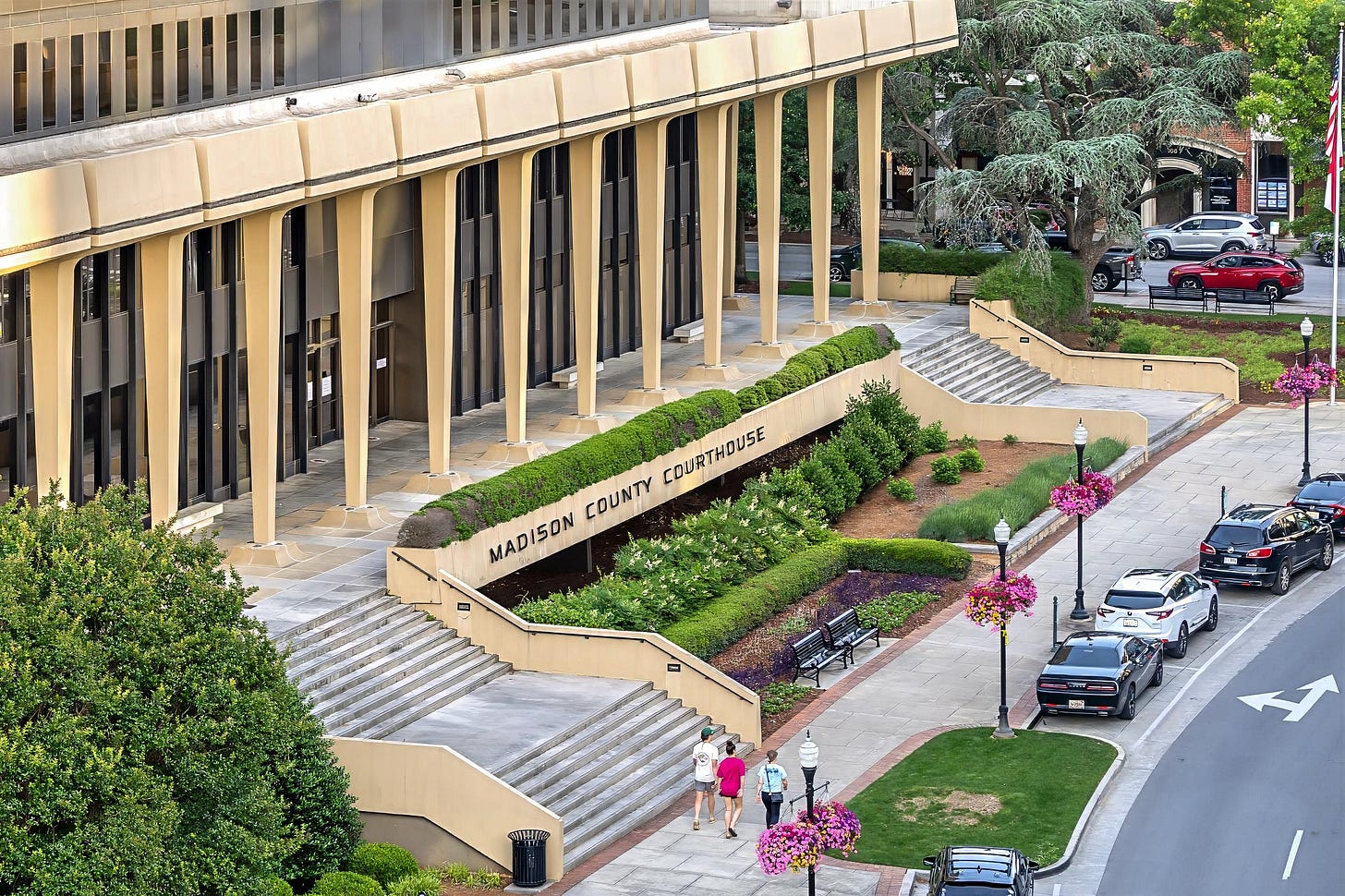
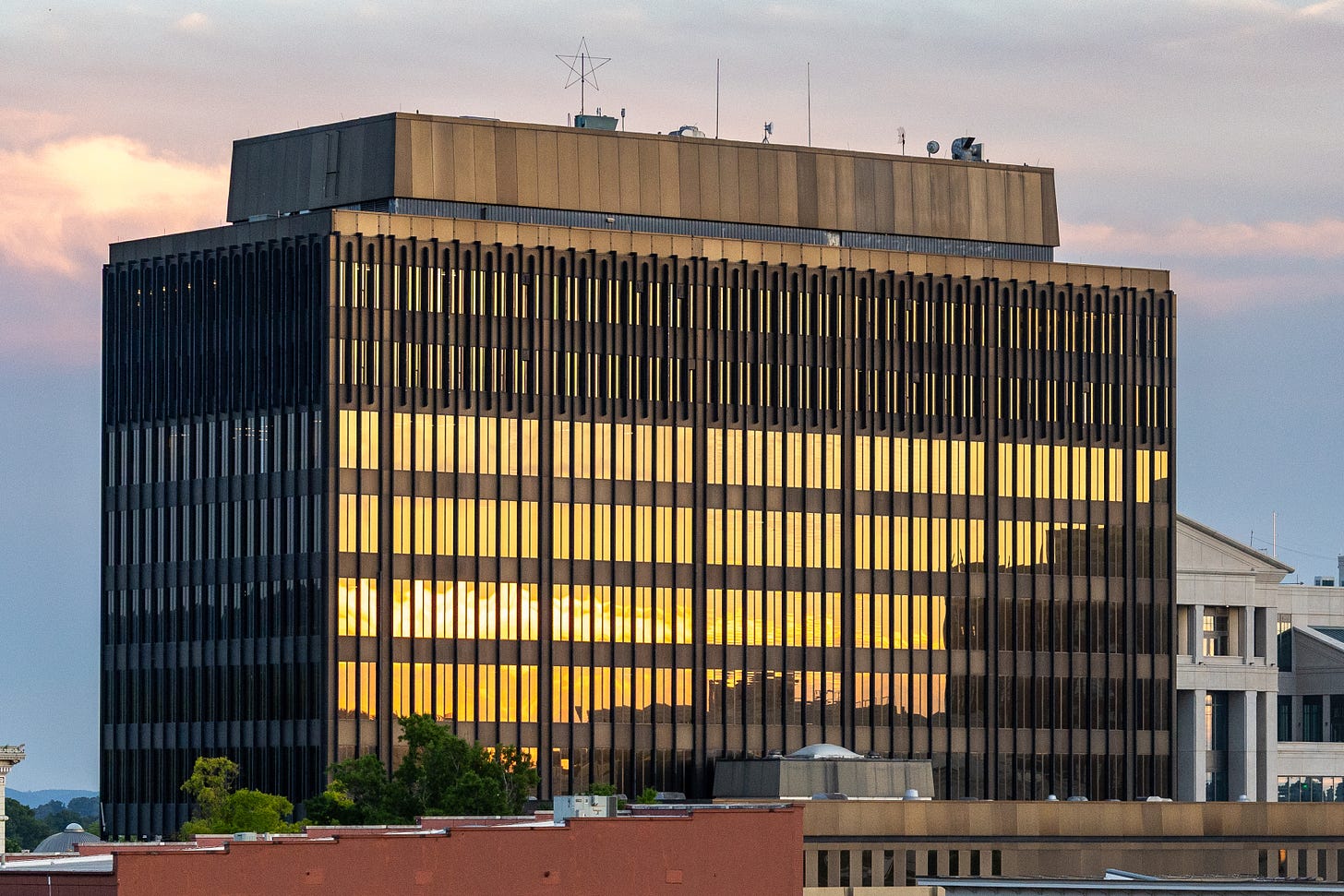
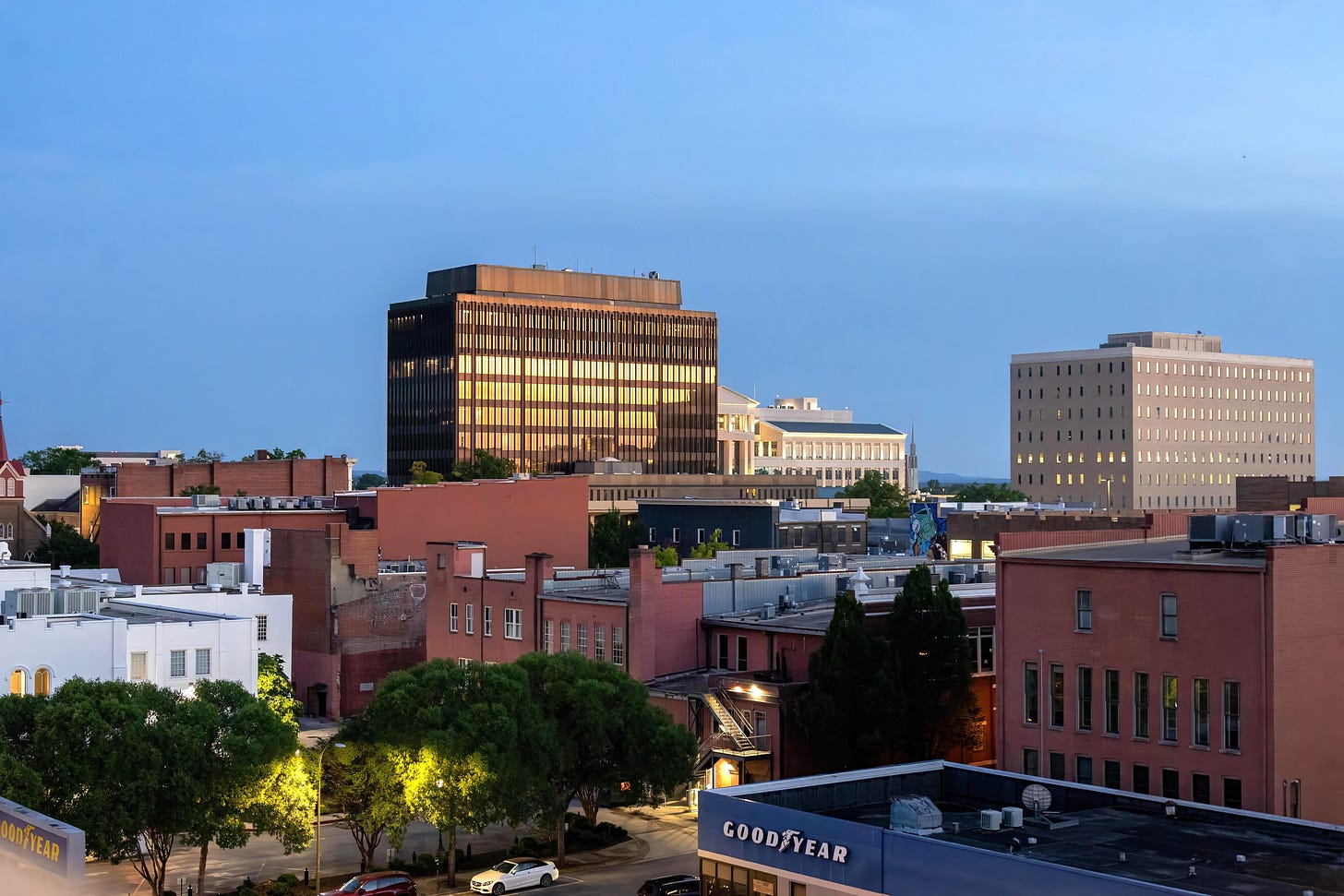
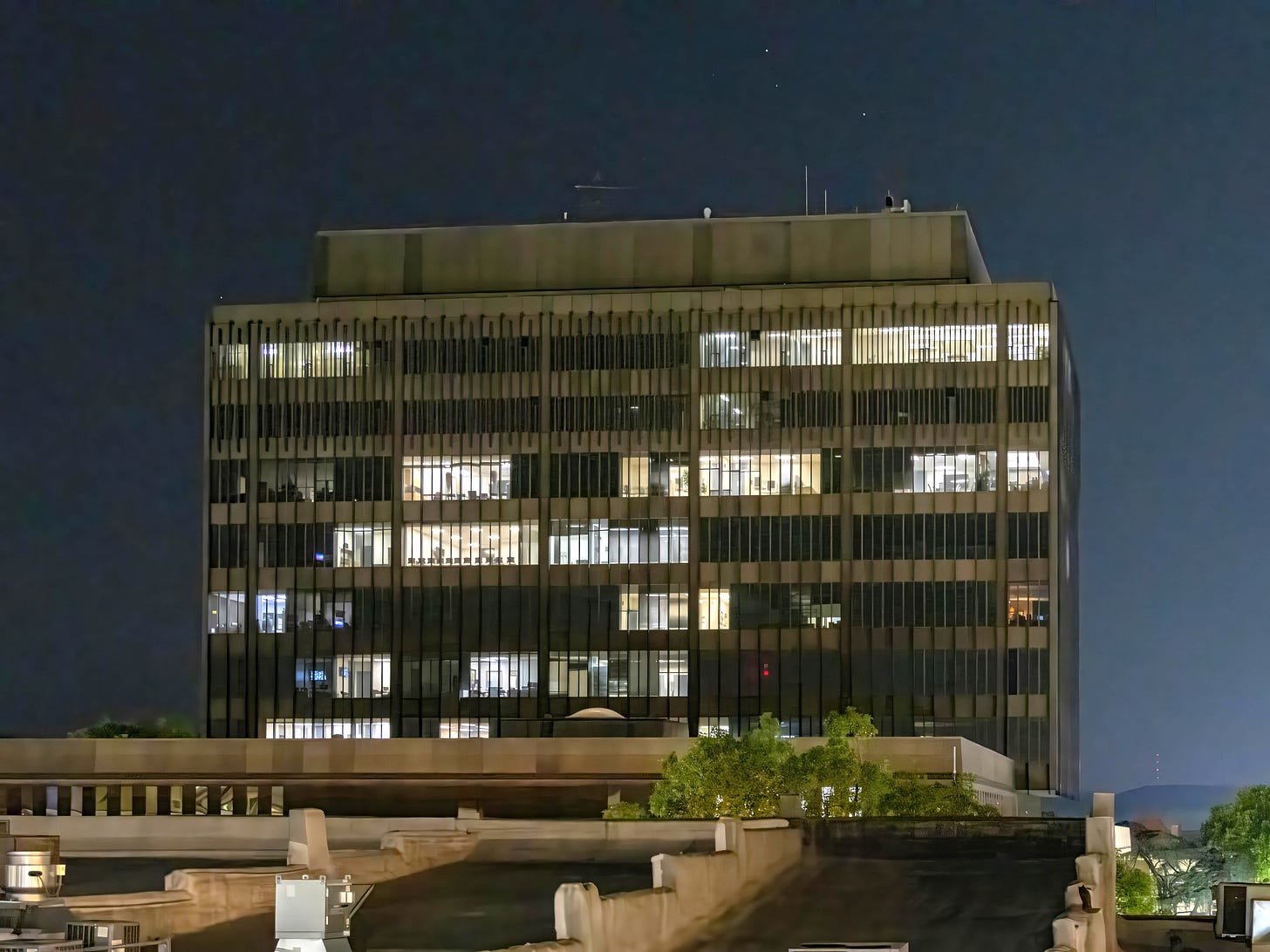
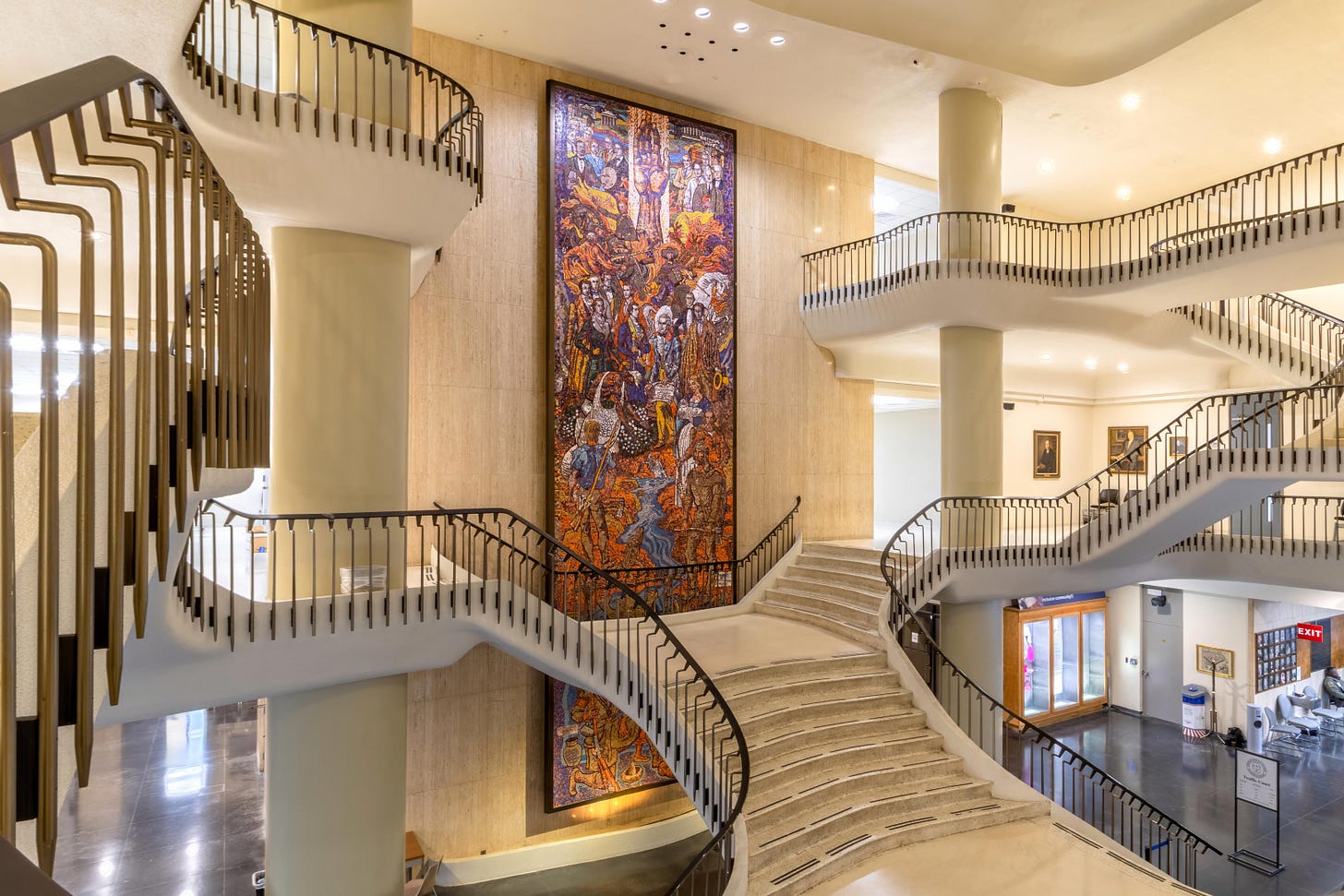
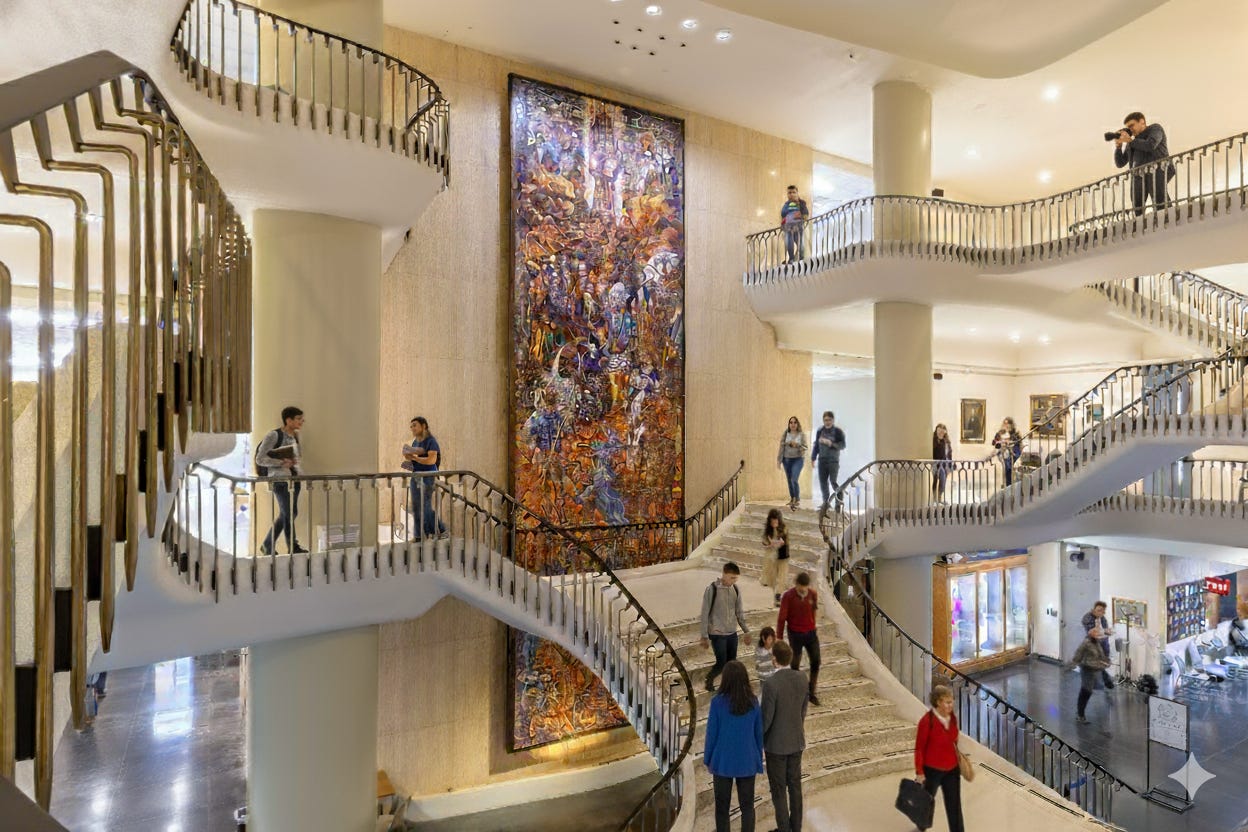
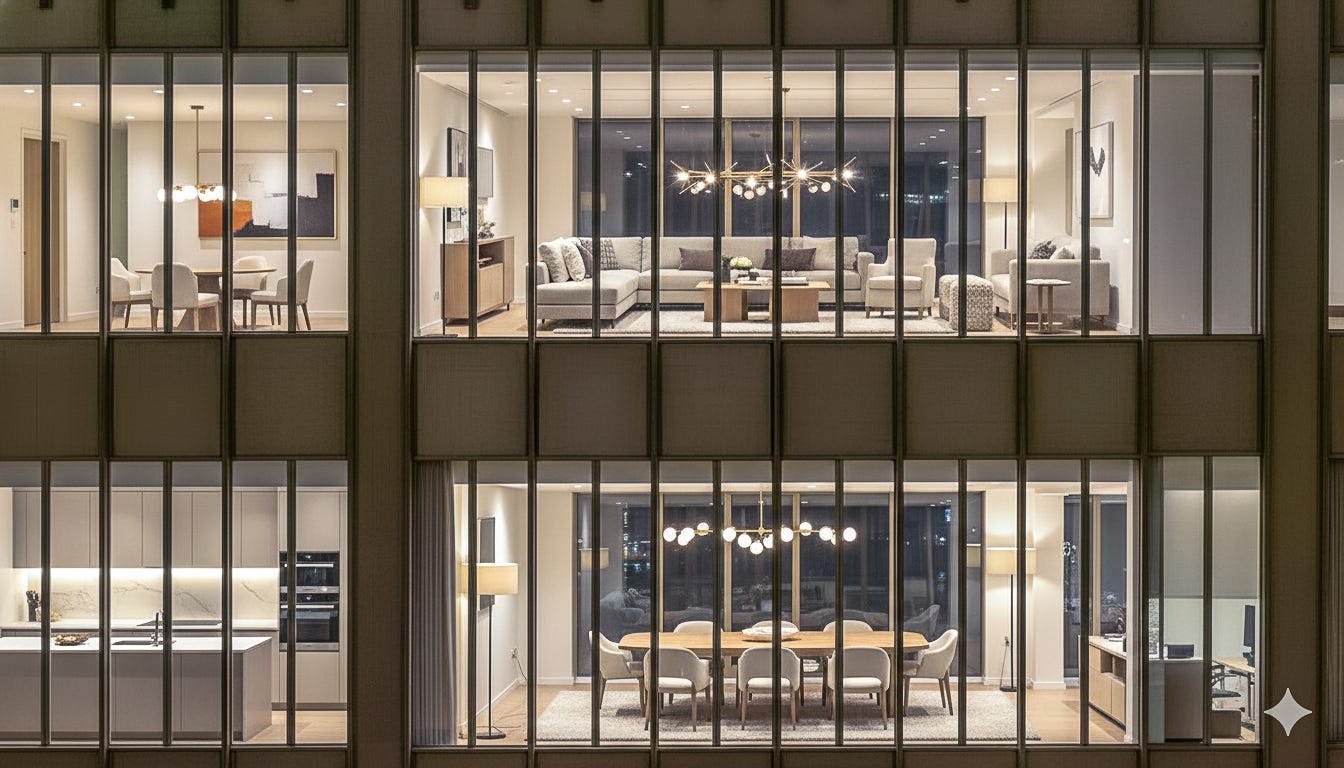
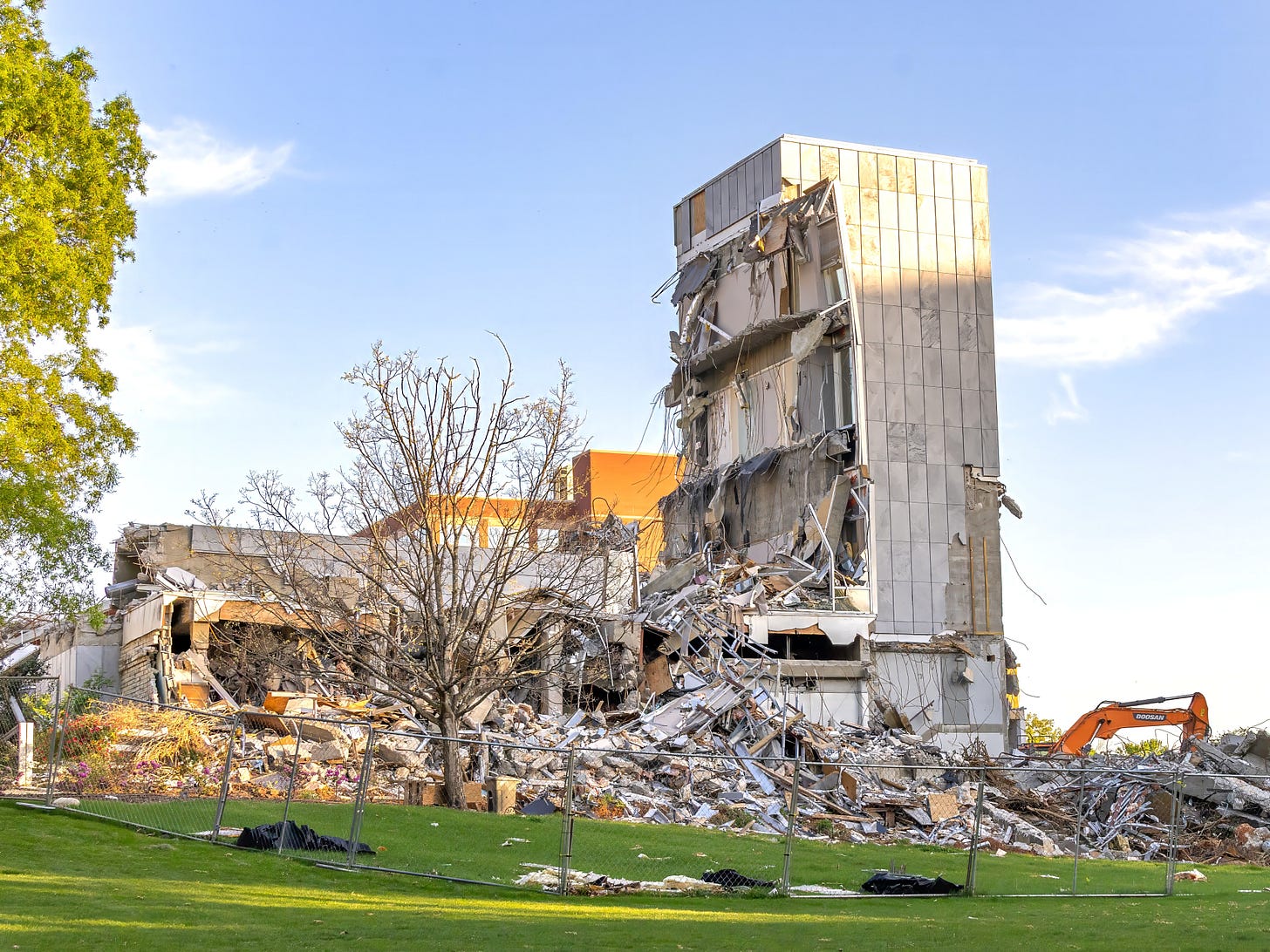
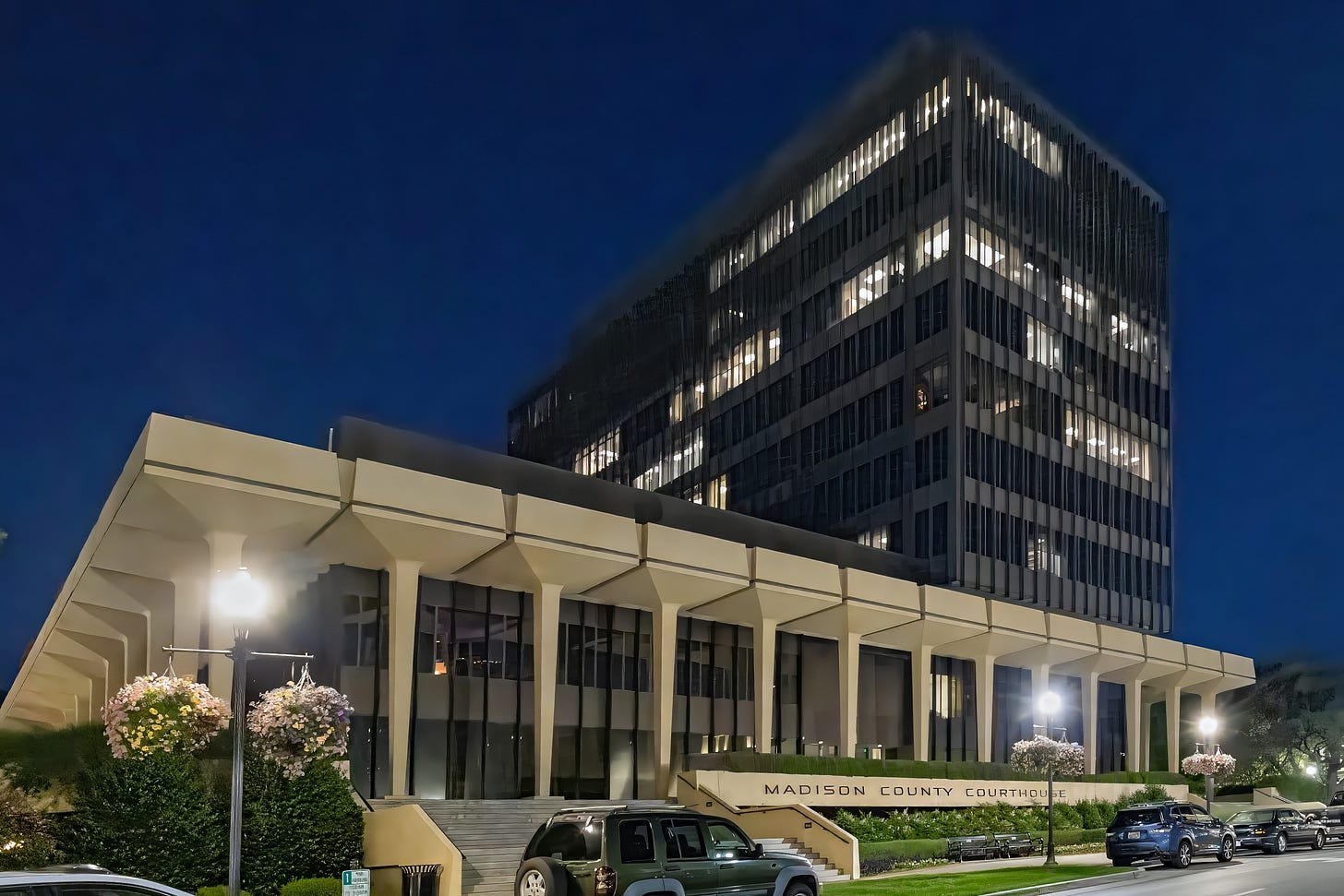
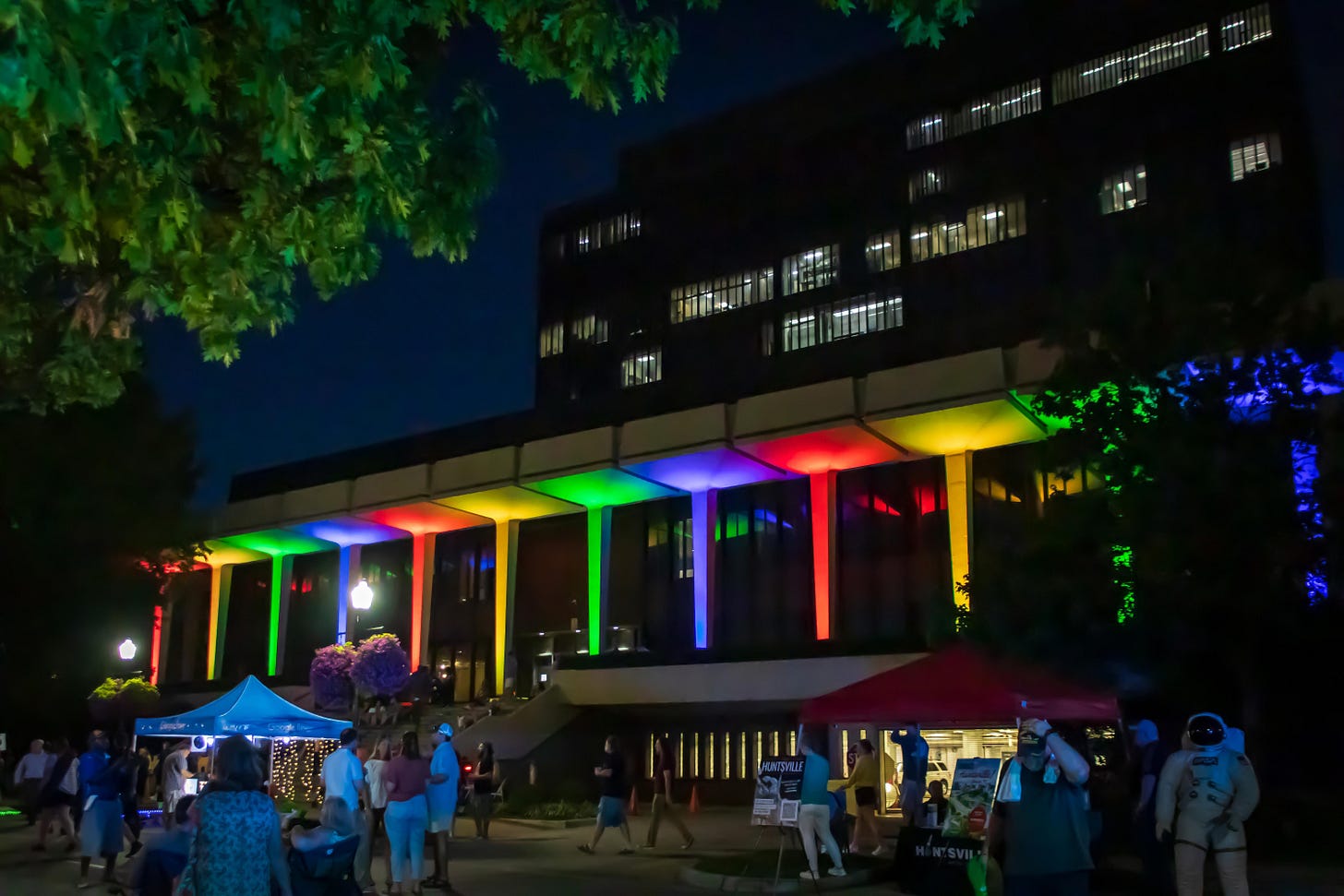
Love, love, love this article and the vision you have shared. So much potential.
Great article, Vicki! Love the idea.